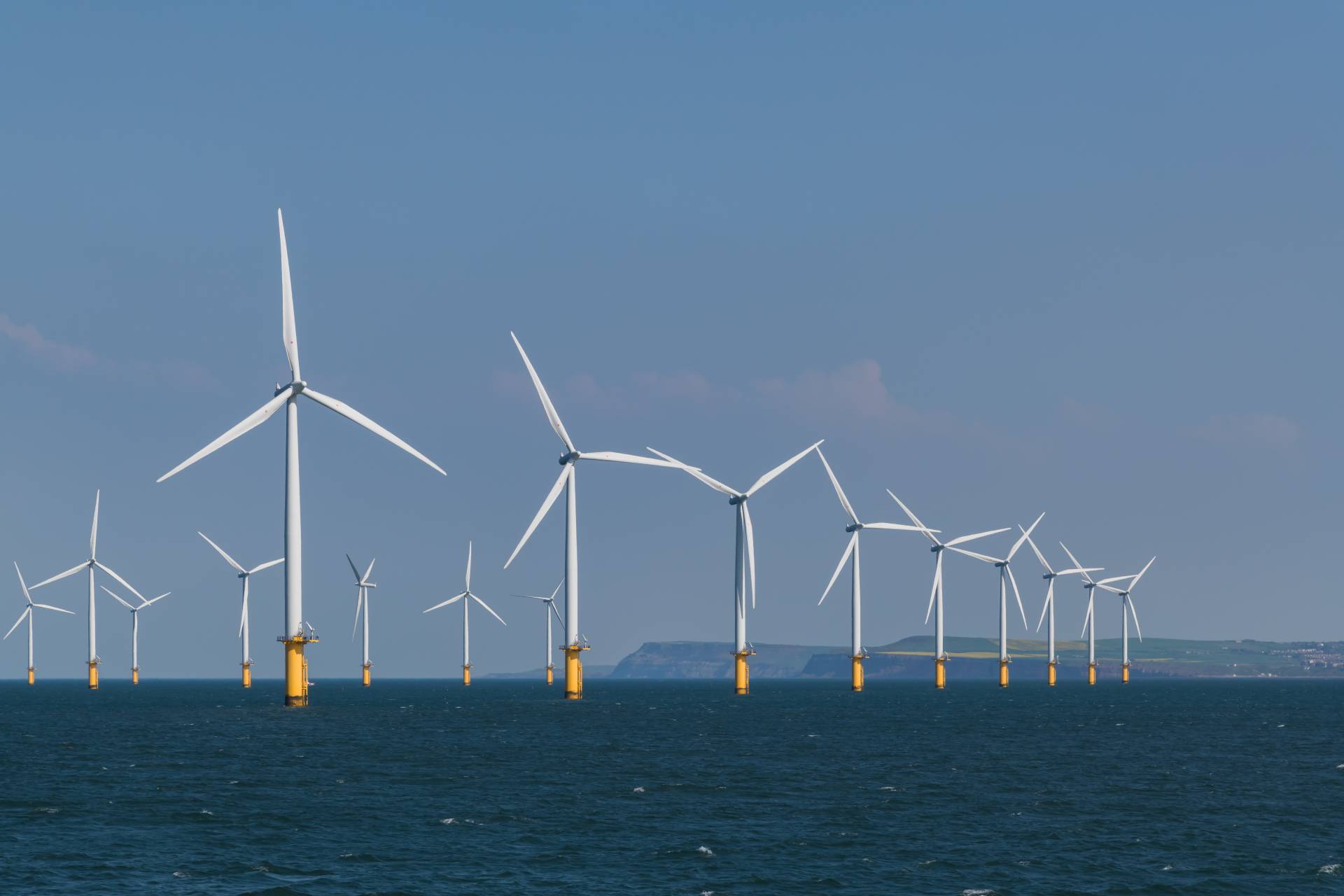Offshore Wind Farm Economics: A Turning Point For The Industry?

Table of Contents
Decreasing Capital Costs and the Levelized Cost of Energy (LCOE)
The Levelized Cost of Energy (LCOE) is a crucial metric for assessing the economic viability of any power generation project, including offshore wind farms. LCOE represents the average cost per unit of electricity generated over the entire lifespan of a project, factoring in capital costs, operating expenses, and financing costs. The dramatic decline in LCOE for offshore wind is a primary driver of its growing competitiveness.
Several factors contribute to this decline:
- Economies of Scale: Larger projects benefit from economies of scale, reducing per-unit costs for components and installation.
- Technological Advancements in Turbine Design: Larger turbine sizes with improved aerodynamic designs yield significantly higher energy output per unit, lowering the cost per kilowatt-hour (kWh).
- Improved Installation Techniques: More efficient installation methods, including specialized vessels and improved logistical planning, reduce installation time and costs.
Specific Examples of Cost Reductions:
- Larger Turbine Sizes: Turbine capacity has increased dramatically, leading to substantial gains in energy production. Modern turbines boast capacities exceeding 15 MW, compared to earlier models with capacities below 5 MW.
- Efficient Manufacturing: Advanced manufacturing techniques and supply chain optimizations have reduced the cost of turbine components.
- Reduced Installation Time: Innovations in offshore installation methods, like the use of specialized jack-up vessels, have drastically reduced installation time and associated costs.
Data shows a consistent downward trend in LCOE for offshore wind, making it increasingly competitive with traditional fossil fuel-based power generation in many regions.
Government Policies and Subsidies: A Critical Role in Offshore Wind Farm Economics
Government policies and subsidies have been instrumental in fostering the growth of the offshore wind industry. Supportive policies help mitigate the inherent risks associated with large-scale offshore projects and encourage private sector investment.
Different policy instruments play crucial roles:
- Feed-in Tariffs: Guaranteed prices for electricity generated from renewable sources provide price certainty and encourage investment.
- Renewable Portfolio Standards (RPS): Mandates requiring a certain percentage of electricity to come from renewable sources create a guaranteed market demand.
- Carbon Pricing: Mechanisms like carbon taxes or cap-and-trade systems incentivize the adoption of low-carbon energy sources like offshore wind.
Examples of Successful Government Support Programs:
- The UK's Contracts for Difference (CfD) scheme has successfully driven down the cost of offshore wind through competitive auctions.
- The US has implemented various tax credits and state-level renewable energy standards to stimulate offshore wind development.
However, the long-term sustainability of government support is crucial. Phasing out subsidies while maintaining industry growth requires a careful and strategic approach to ensure continued investment and affordability.
Technological Advancements and Innovation: Driving Efficiency and Reducing Costs
Technological innovation is continuously pushing the boundaries of offshore wind farm economics. Advancements in turbine design, floating platforms, and smart grid integration are contributing to efficiency gains and cost reductions.
Key Technological Advancements and their Economic Impact:
- Floating Offshore Wind Turbines: This technology enables the deployment of wind farms in deeper waters, unlocking vast untapped resources previously inaccessible to conventional bottom-fixed turbines.
- Advanced Materials: Lighter and more durable materials reduce turbine weight, transportation costs, and maintenance requirements.
- Digital Twins and AI-driven Optimization: Digital twins allow for the simulation and optimization of wind farm operations, improving energy production and reducing downtime.
Research and development are vital for sustained innovation in the offshore wind sector, pushing the boundaries of what's possible and ensuring the industry remains competitive.
Grid Integration Challenges and Infrastructure Investments: Overcoming Economic Barriers
Connecting offshore wind farms to the onshore electricity grid presents significant economic challenges. These challenges include:
- High Transmission Costs: Building and maintaining high-voltage direct current (HVDC) transmission lines and onshore substations represents a substantial capital expenditure.
- Grid Upgrades: Existing onshore grids may require upgrades to handle the influx of electricity from offshore wind farms.
- Transmission Losses: Energy losses during transmission can impact the overall economic viability of a project.
Addressing these challenges requires:
- Strategic planning for grid infrastructure development.
- Investments in advanced grid technologies to minimize transmission losses.
- Coordination between offshore wind developers and grid operators.
Careful planning and investment in grid infrastructure are essential for realizing the full economic potential of offshore wind energy.
Conclusion: Is Offshore Wind Farm Economics a Turning Point?
The significant progress made in reducing the LCOE of offshore wind energy, driven by economies of scale, technological innovation, and supportive government policies, suggests we are indeed witnessing a turning point. While grid integration challenges remain, ongoing innovation and strategic investment are paving the way for increasingly cost-competitive offshore wind power. The current economic trends strongly indicate a bright future for offshore wind, solidifying its role in a sustainable energy future. Dive deeper into the world of offshore wind farm economics and discover the potential for future growth.

Featured Posts
-
 Analyzing The Final Destination Franchise Box Office Performance And Bloodlines Potential
May 04, 2025
Analyzing The Final Destination Franchise Box Office Performance And Bloodlines Potential
May 04, 2025 -
 Britains Got Talent Semi Final Results Fuel Fix Claims
May 04, 2025
Britains Got Talent Semi Final Results Fuel Fix Claims
May 04, 2025 -
 Volkanovski Vs Lopes A Deep Dive Into Ufc 314s Main Event Odds
May 04, 2025
Volkanovski Vs Lopes A Deep Dive Into Ufc 314s Main Event Odds
May 04, 2025 -
 Bradley Cooper Directs Will Arnett On Late Night Nyc Is This Thing On Shoot
May 04, 2025
Bradley Cooper Directs Will Arnett On Late Night Nyc Is This Thing On Shoot
May 04, 2025 -
 Nba Le Triple Double De Westbrook Un Atout Majeur Pour Denver
May 04, 2025
Nba Le Triple Double De Westbrook Un Atout Majeur Pour Denver
May 04, 2025
